Small, Loud, and Versatile
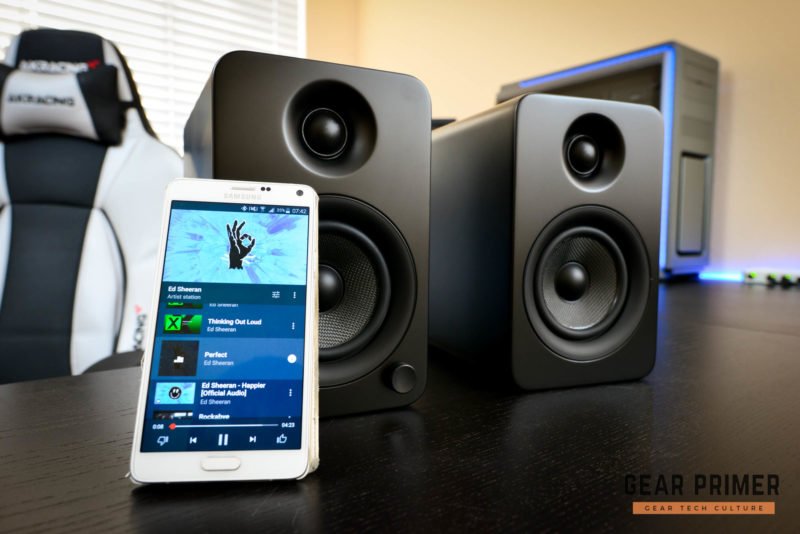
Maybe it’s unprofitable or maybe it’s too technically difficult. Either way, there don’t seem to be too many companies out there making decent high end powered speakers at reasonable prices.
After recently speaking with some of our readers, we were introduced to a Canadian company by the name of Kanto Living, which produces high end desktop speakers similar to those found in Audioengine’s speaker lineup. As we have previously reviewed and have been quite impressed with all of Audioengine’s offerings, we were quite intrigued when we heard about Kanto Living.
Looking at Kanto Living’s website, they make everything from furniture to speakers to cables to mounts, but what we’re most interested in is their bookshelf powered speakers. Looking at their bookshelf powered speaker lineup, it includes three speakers: the Kanto YU2, Kanto YU4, and Kanto YU6. The two newest speakers in the lineup is the Kanto YU4 and Kanto YU6, both of which were announced at CES 2017.
Specifications
| Manufacturer | Kanto Living | |
|---|---|---|
| Model | YU4 | YU6 |
| Type | 2.0 Powered Bookshelf Speakers | |
| Power Output | 140W Peak Power Total, 70W Total RMS | 200W Peak Power Total, 100W Total RMS |
| Inputs | 1 x 3.5mm mini-jack, 1 x RCA L/R with Phono Switch Inputs, 2 x Optical (TOSLINK), 1 x Bluetooth with aptX | |
| Outputs | 1 x Subwoofer, 1 x USB Charge 5V 1A, 1x Speaker Binding Posts | |
| Amplifier Type | Class D | |
| Frequency response | 60 Hz – 20 kHz | 50 Hz – 20 kHz |
| Dimensions | 5.5” W x 7.5” D x 8.7” H | 6.9” W x 8.1” D x 10.7” H |
| Weight (LEFT speaker) | 6.9 lb (3.2 kg) | 9.4 lb (4.3 kg) |
| Weight (RIGHT speaker) | 5.5 lb (2.5 kg) | 7.8 lb (3.5 kg) |
| Finish options |
|
|
| Materials and Construction |
|
|
| Warranty | 2 Years Limited | |
Today we’ll be reviewing the Kanto YU4 which is the medium sized speaker in Kanto’s bookshelf speaker lineup. On paper, the Kanto YU4 is a very well spec’d speaker. Featuring a combination of 1″ silk dome tweeters paired with 4″ Kevlar woofers, the Kanto YU4 is capable of a frequency range of 60 Hz – 20 kHz. Powering the setup is a Class D amplifier which Kanto claims will output 70W RMS and 140W peak. The Kanto YU4 is also very versatile featuring the ability to accept a wide variety of inputs including RCA, 3.5mm AUX, Optical and Bluetooth.
Let’s take a closer look.
A Closer Look
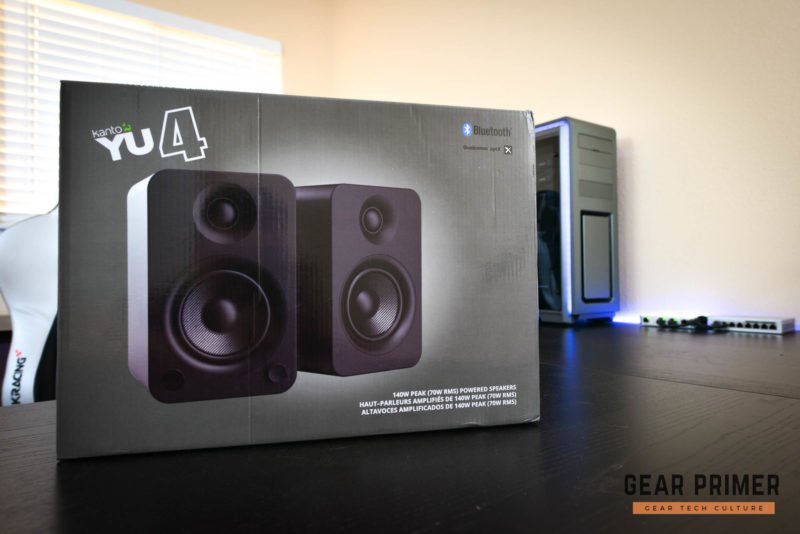
Here’s a look at the packaging for the Kanto YU4.
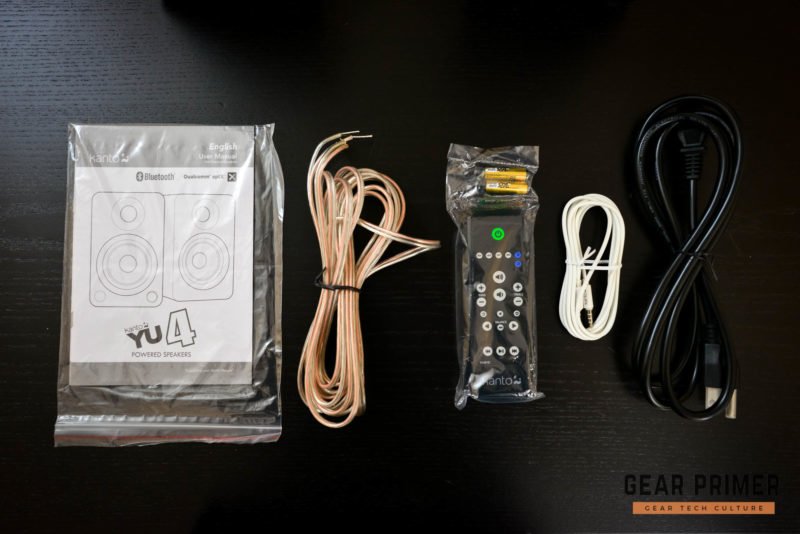
Included in the packaging is some documentation, speaker wire, remote with batteries, 3.5mm to 3.5mm aux cable, and a power cord. Kanto also includes some adhesive foam feet for the YU4, which we’ll look at in a bit.
Here’s a look at the Kanto YU4 speakers themselves. Our sample came in matte black, but the speakers come in a variety of additional color options including gloss black, gloss white, gloss teal, gloss red, matte grey and matte white.
The Kanto YU4 cabinets are constructed of MDF and each speaker features a 1″ silk dome tweeter paired with a 4″ Kevlar woofer. At the rear of each speaker is also a 1″ port to help improve bass response.
At the front of the left speaker is a small knob which can turn on/off the speakers, cycle through the different input options, and control the volume.
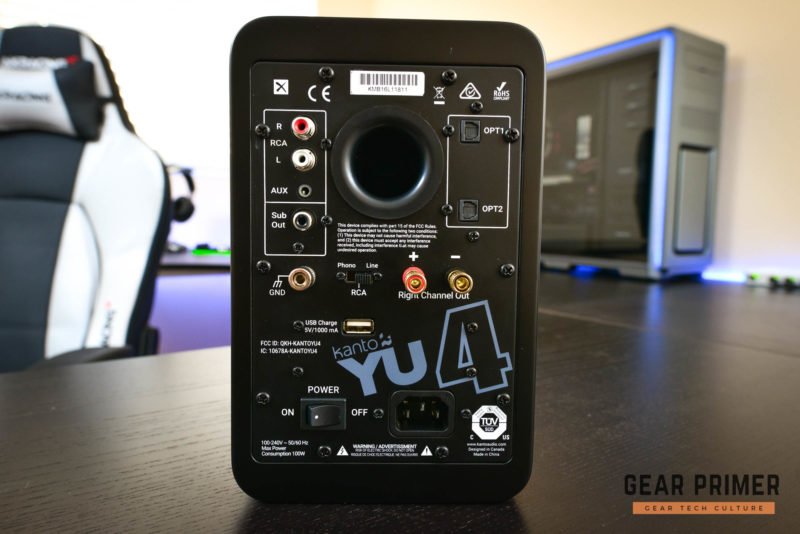
At the rear of the left speaker is where all the magic happens. Wired connectivity options include a RCA connectors, two optical connectors, and 3.5mm auxiliary plug. Wireless connectivity options include Bluetooth with AptX support.
Outputs include sub out and speaker cable posts for connecting to the right speaker. At the rear of the speaker, Kanto also includes a phono/line switch for use with turntables, a 5V1A USB charging port, a ground wire post, DC-power connector, and a power switch.
The rear of the right speaker simply features speaker cable posts for connection to the left speaker.
At the bottom of the Kanto YU4 is 1/4″ threaded inserts which can be used to mount the speaker on speaker stands. Kanto also includes two sets of four adhesive feet used to prevent scratches on the speaker cabinets. I’d highly recommend using these as the speakers scratch very easily. I would’ve preferred Kanto to include a felt lining at the bottom similar to Audioengine’s speakers. This not only helps prevent scratches, but also doubles up as a bit of acoustic isolation for the speakers.
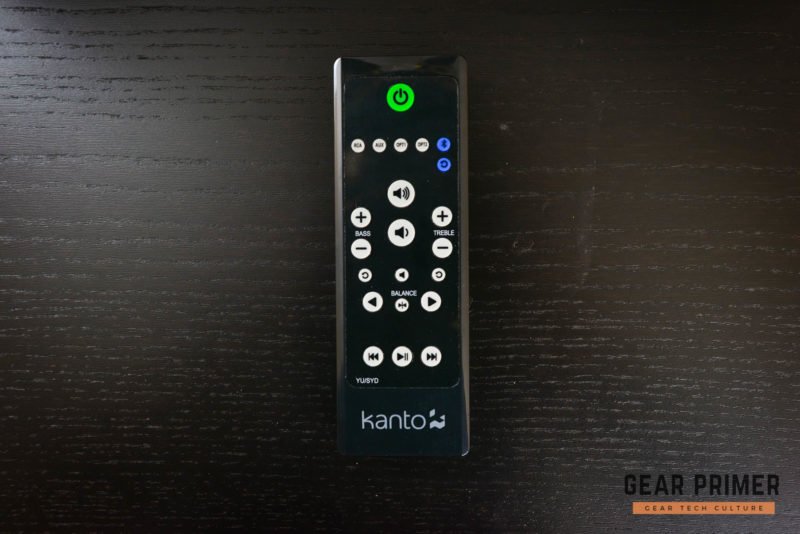
The remote for the Kanto YU4 is quite busy. It allows changing the different input sources, pairing Bluetooth, increasing/decreasing volume/bass/treble, adjusting the sound balance, and even offers basic music controls for connected Bluetooth devices. Since the remote offers so much additional functionality, it’s probably a good idea to make sure the remote doesn’t get lost. That said, if the remote is lost, Kanto will probably allow purchasing of replacement remotes if you contact them via customer service.
Here’s a look at some of the internal circuitry in the left speaker of the Kanto YU4. The left speaker features a Class D amplifier which is able to deliver up to 70W RMS and 140W total peak power. Separated from the amplifier is the audio circuitry. Nothing here stands out too much beyond what you’d expect for a pair of speakers in this pricerange.
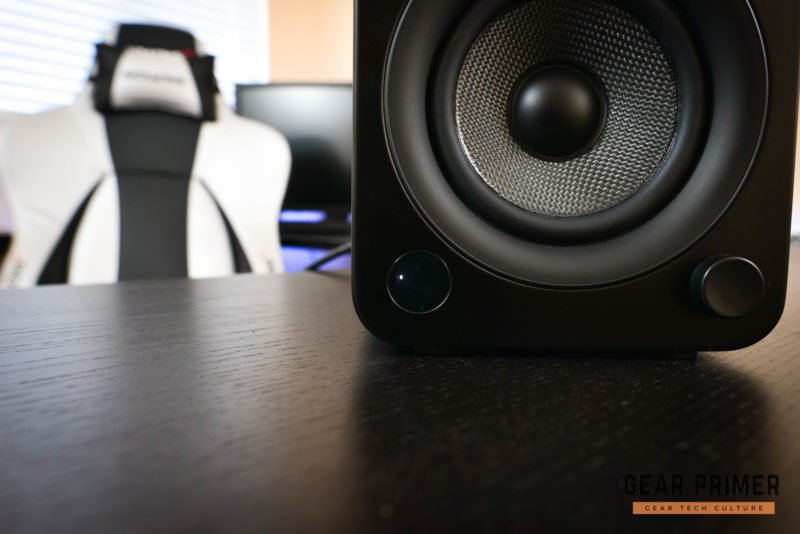
Once plugged in, there’s a status indicator light at the bottom left of the left speaker indicating whether the speakers are on or off. In the off state, the LED glows red while the LED glows white when the speaker is turned on.

Here’s a look at the Kanto YU4 next to a 13-inch MacBook Pro for reference. At 8.7-inches tall, the Kanto YU4 can’t be considered a small speaker, but it’s still very compact making it an excellent size for desktop speakers. Those looking for something to fill larger spaces such as a living room or entertainment center will likely want to step up to the Kanto YU6.
Performance
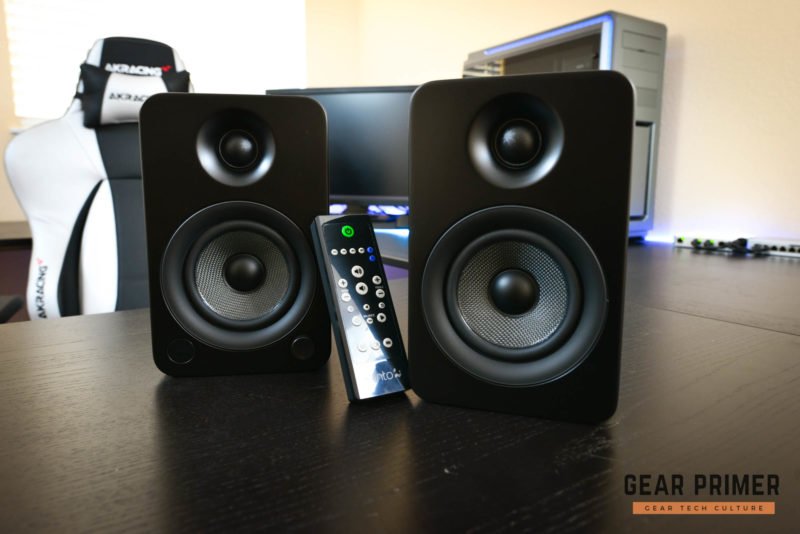
In order to test the Kanto YU4, the speakers were connected via a RCA connection to a PC using the Audioengine D1 DAC. The Audioengine D1 is an excellent DAC based on the AKM4396 digital-to-analog converter chipset. The Kanto YU4 was then burned-in period of approximately 80 hours before evaluation.
The Kanto YU4’s sound signature can be described as relatively flat with a little additional treble and bass added in to create a more exciting sound signature. Mids on the Kanto YU4 were warm and full making the Kanto YU4 an excellent pair of speakers for a premium casual listening experience.
Lows on the Kanto YU4 are very impressive for its size, which is largely due to its ported cabinet design. At higher volumes, the Kanto YU4’s low end does tend to be a bit more boomy than I’d like, but it’s controlled well enough at typical listening volumes, so it’s not a huge concern unless you’re planning to overdrive the speakers on a regular basis. The real strength with the Kanto YU4 however is in its ability to re-produce vocal or stringed instrument heavy music. The Kanto YU4’s ability to reproduce vocals and stringed instruments at the level of clarity and crispness it’s capable of is pleasantly surprising.
Comparing against the Audioengine A5+, the Kanto YU4 performs rather similarly which isn’t surprising considering its similar design. However, the Audioengine A5+ does have a slightly richer and more balanced sound which is likely due to the cabinet design along with the way the speakers are tuned. That said, the difference is not easy to hear unless the speakers are placed side by side and as Audioengine doesn’t offer a medium sized speaker, it’s not exactly a completely fair comparison when comparing the Audioengine A5+ to the Kanto YU4.
Although I didn’t notice any major issues during testing, one thing that was a bit disappointing was the Bluetooth range. Unlike Audioengine’s speakers which features an external antenna easily allowing ranges of 30+ feet through walls, the Kanto YU4 packs the antenna inside, which unfortunately means Bluetooth range is limited to a small room. Using a Samsung Galaxy Note 4, the Bluetooth connection began cutting out at just 10-15 feet with a line of sight connection to the speaker. As such, if wireless music streaming is something that’s important to you, you may want to invest in something like a Google Chromecast Audio. This would not only solve the wireless range issue, but also solve the problem with the Kanto YU4’s auto-shutoff feature which shuts off the speakers after a period of non-use. While the speakers can be woken up with a signal from a wired connection, this doesn’t work with a Bluetooth connection.
Conclusion
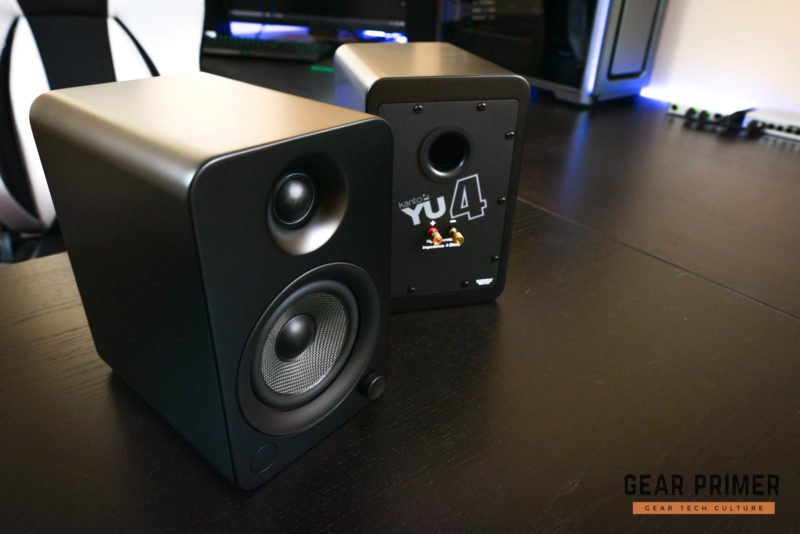
Ever since we had an opportunity to review the Audioengine A5+ several years ago, Audioengine set the standard for the premium desktop speaker. After reviewing the Kanto YU4, I am confident in saying that Kanto is a solid competitor in this segment, closely rivaling Audioengine with an equally impressive lineup of quality powered speakers with great sound quality, excellent design, and top notch versatility.
The Kanto YU4 is currently available online for around $262, which is a bit expensive for a set of powered speakers, but is quite competitive for a speaker of this class. The similar Audioengine HD3 is priced at $400, which is quite a bit more expensive than the Kanto YU4 despite utilizing smaller drivers.
Overall, the Kanto YU4 is an excellent pair of speakers. Those looking to significantly upgrade their audio experience without investing 2-3x the money into entry level audiophile grade speakers with a separate amp will find the Kanto YU4 a great choice. Recommended!

Sample provided by: Kanto Living

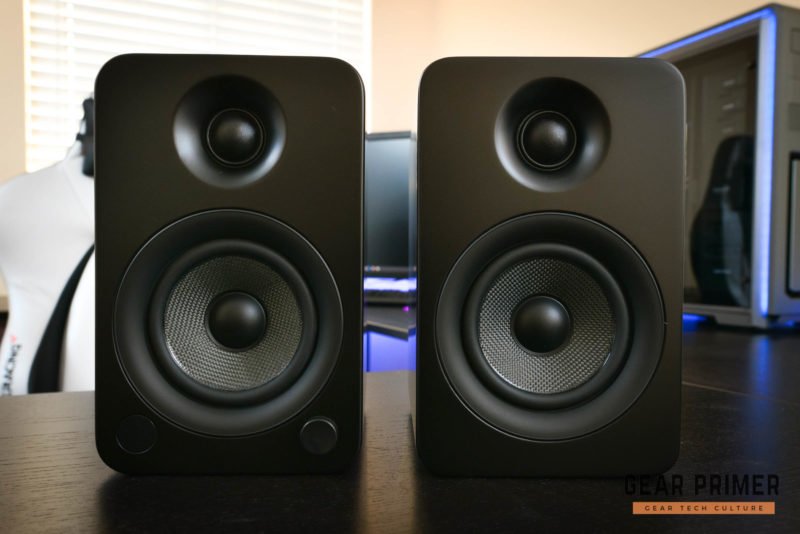
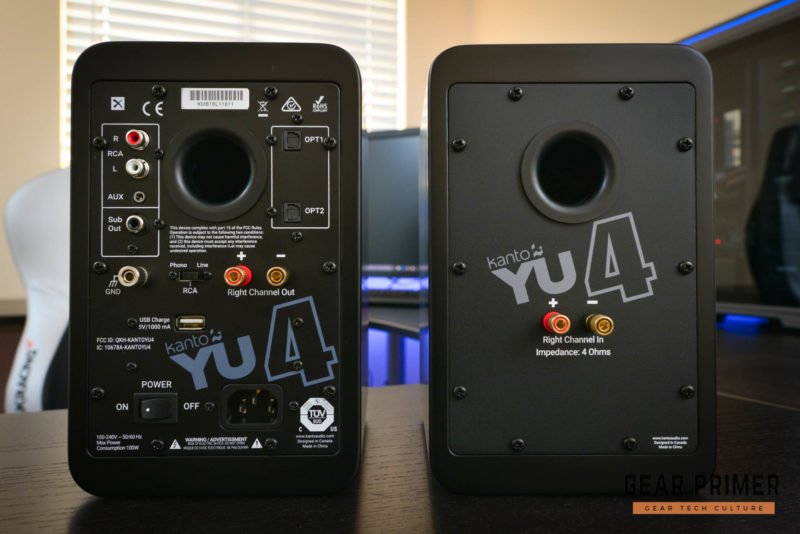
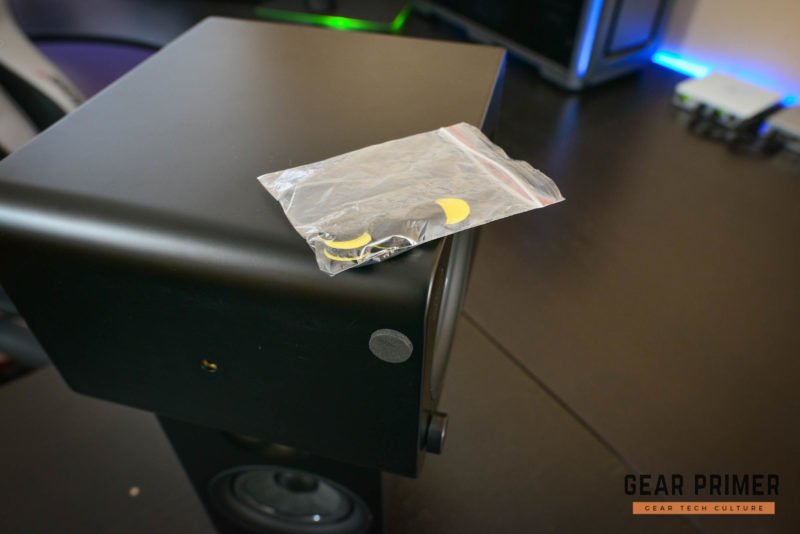
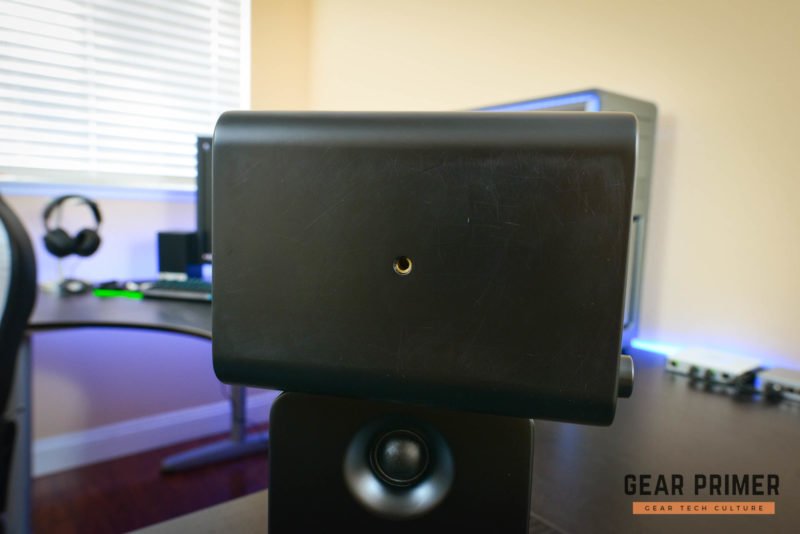
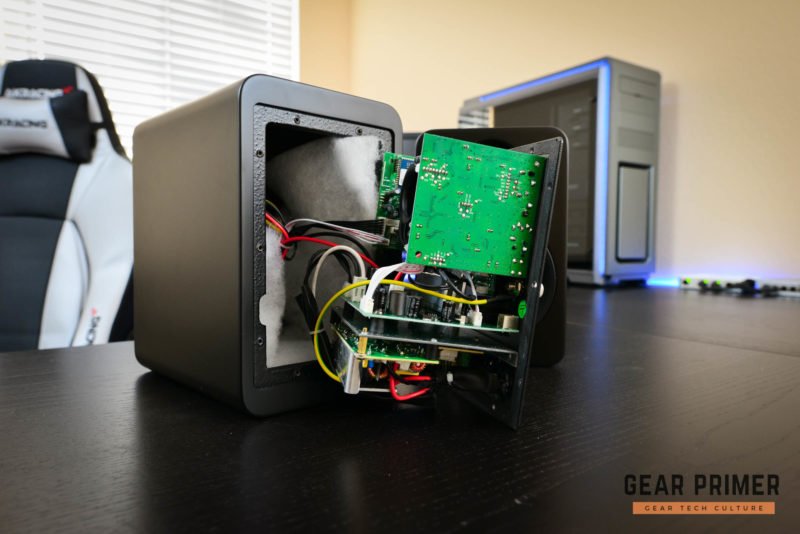
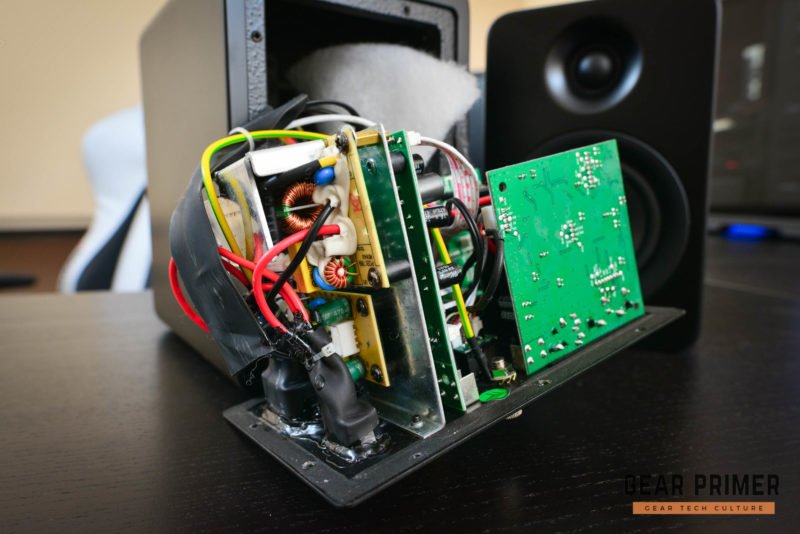
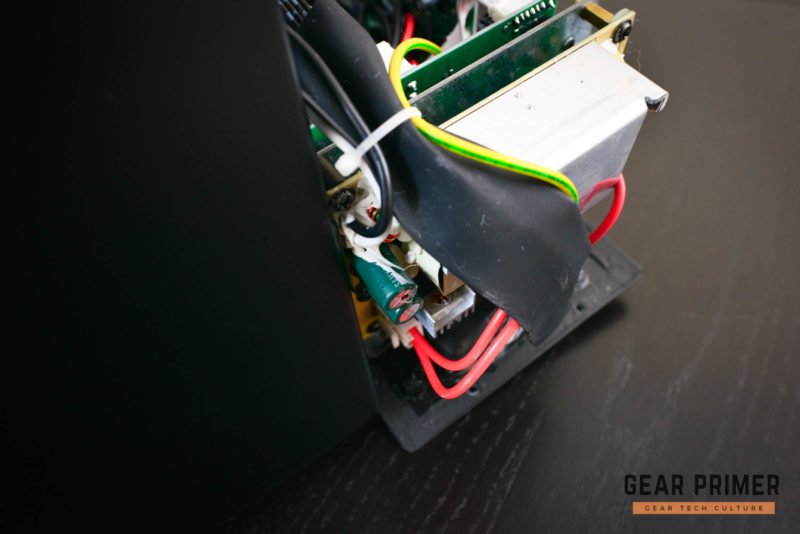
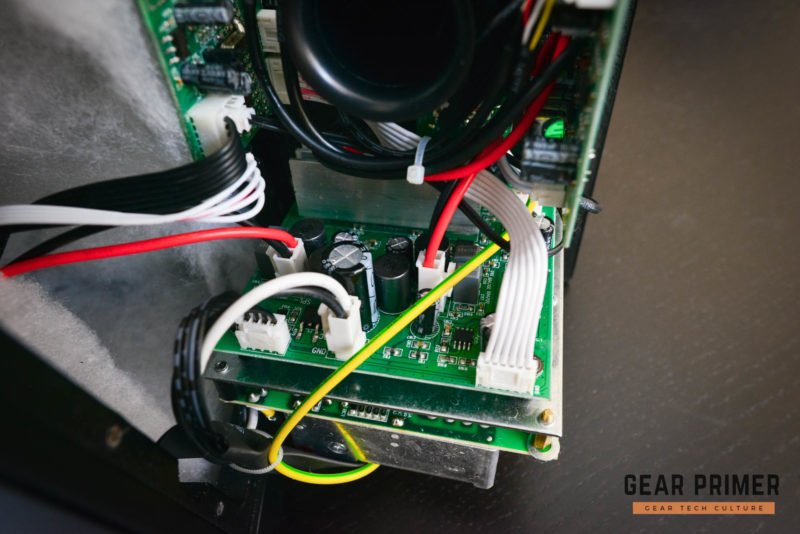
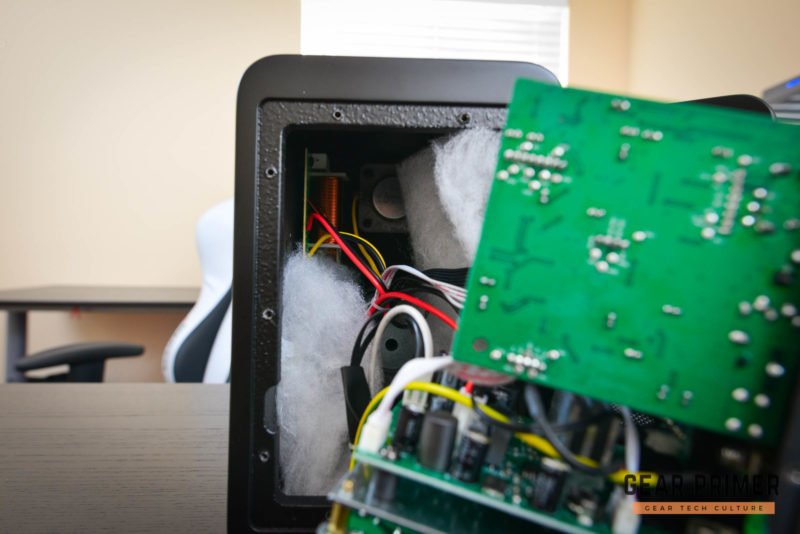
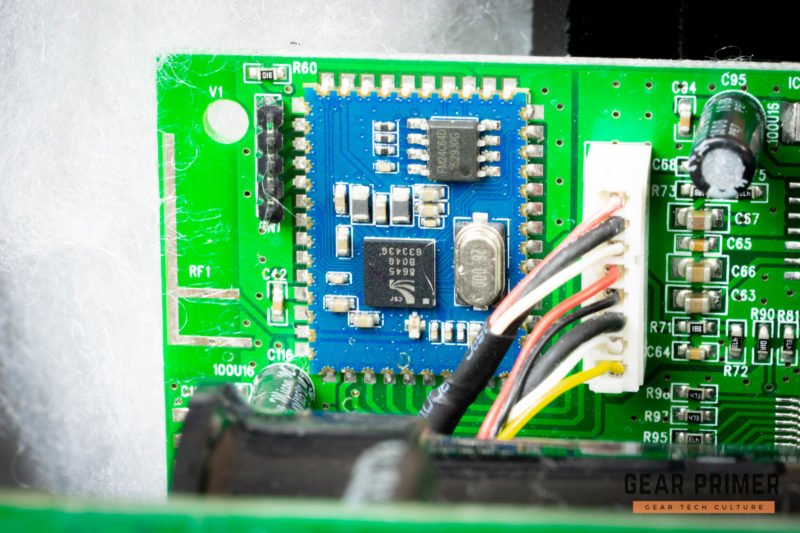
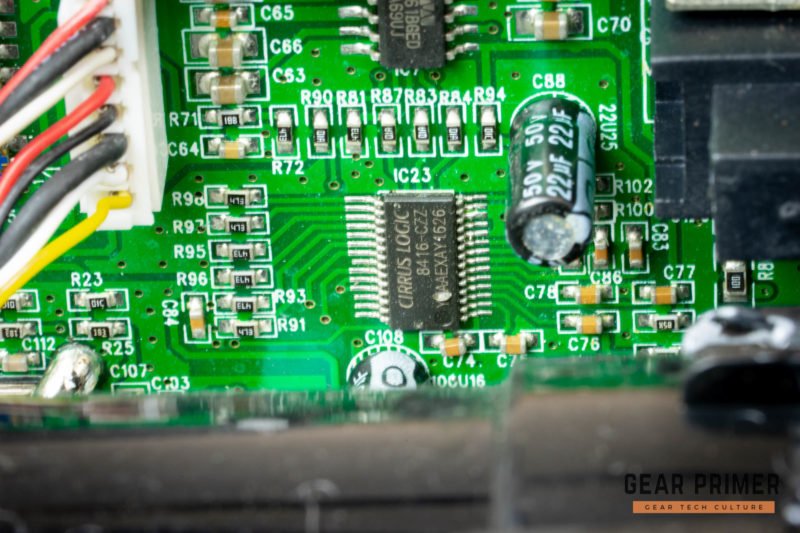
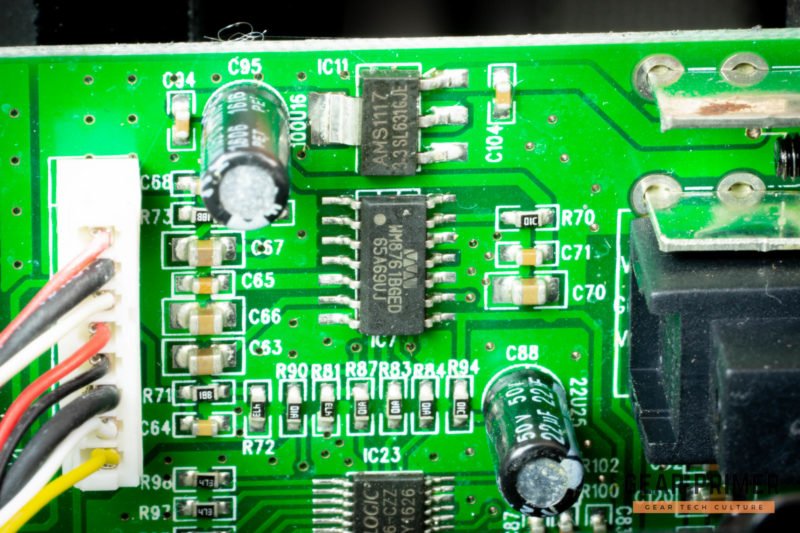
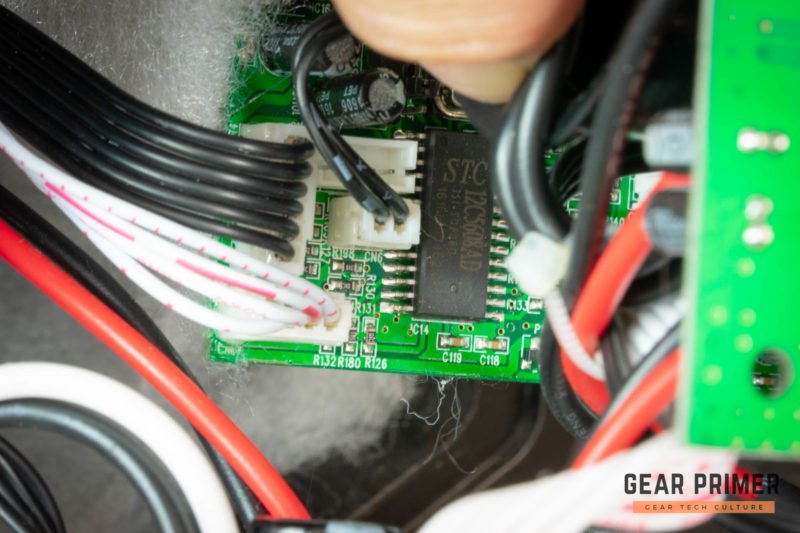
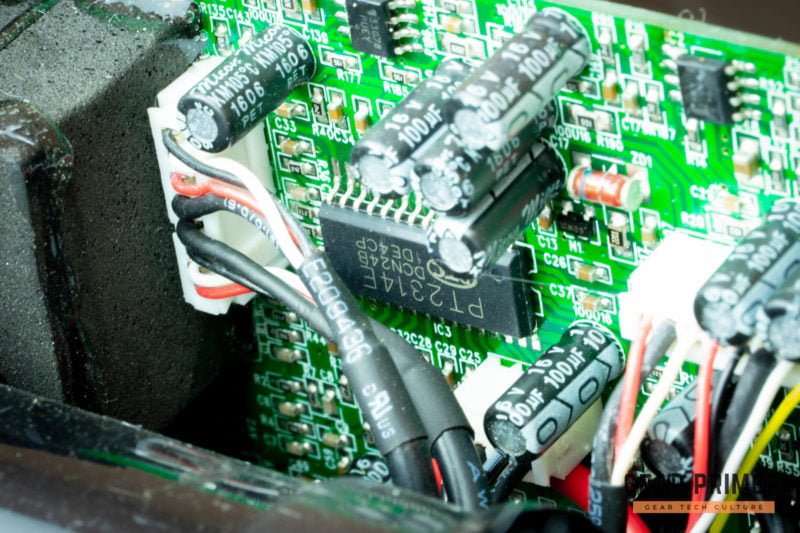
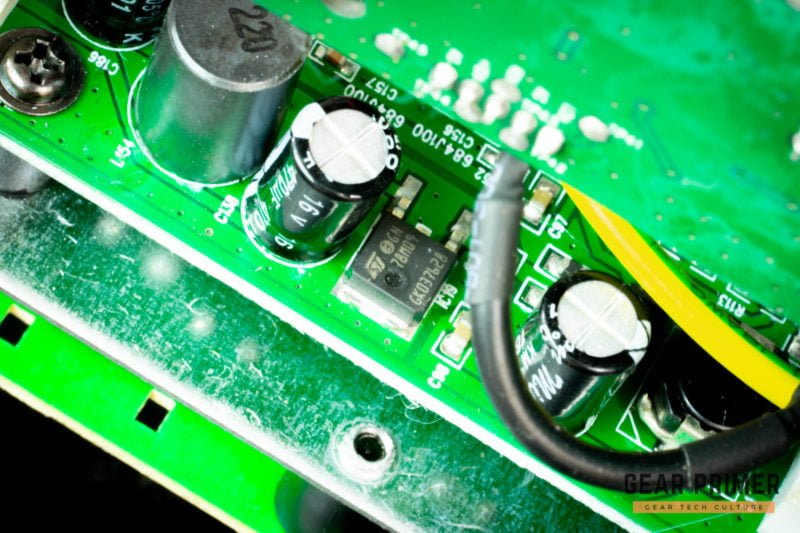
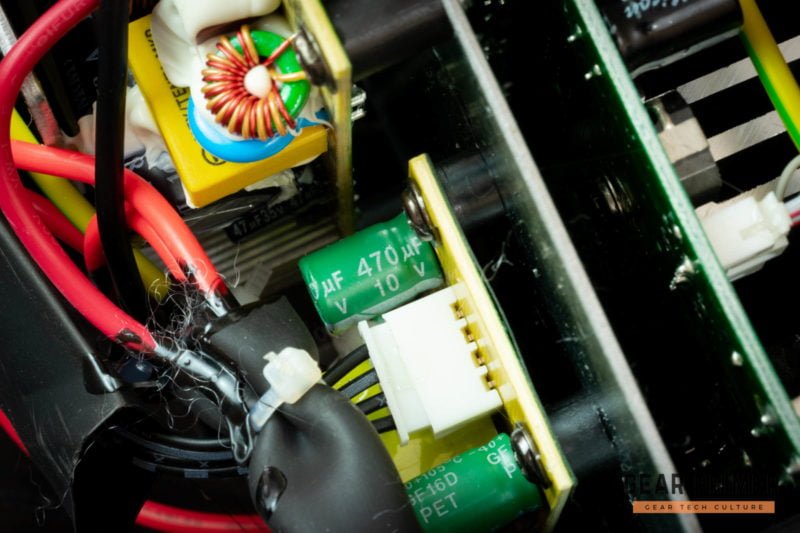
0 Comments